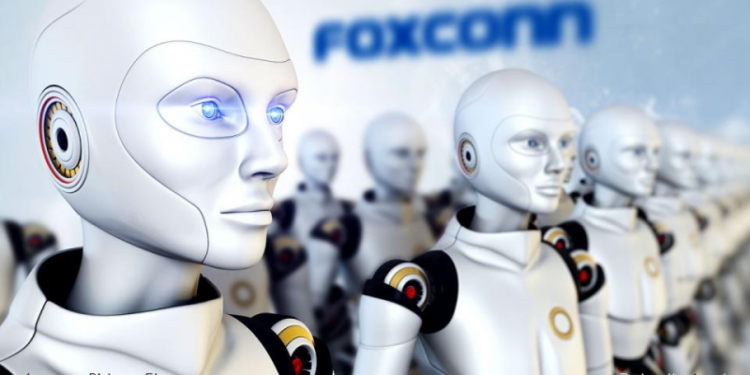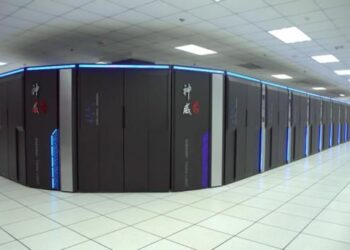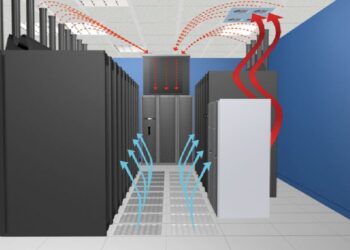In today’s rapidly evolving digital landscape, few industries are experiencing as transformative a surge as artificial intelligence (AI) and its indispensable hardware: the AI server. As technology giants and innovative manufacturers join forces to meet the growing demand for high-performance computing, Foxconn—a global leader in electronics manufacturing—has positioned itself at the forefront of this revolution. With strategic investments, expansive production capabilities, and a clear vision for the future, Foxconn forecasts an explosive boom in the AI server sector that will redefine not only its business model but also the entire tech ecosystem.
Over the past decade, artificial intelligence has transitioned from a niche research area into a mainstream technological driver. Today, industries ranging from healthcare and automotive to finance and entertainment rely on sophisticated AI systems to drive efficiency and innovation. Central to these developments are AI servers—powerful machines capable of processing massive amounts of data with unprecedented speed and accuracy.
Foxconn, known for its prowess in electronics manufacturing and assembly, has long been associated with the production of consumer electronics, including smartphones and computers. However, recognizing the shifting tides of the tech landscape, the company is now channeling its expertise into the production of AI servers. This strategic move is not only a response to market trends but also a proactive effort to secure a pivotal role in the future of data center technologies.
The AI Server Boom: Global Trends and Market Forces
The demand for AI-powered solutions is surging globally. As organizations increasingly invest in AI-driven applications—ranging from autonomous vehicles and smart cities to advanced analytics and personalized healthcare—the need for robust and efficient computing infrastructure has never been greater. AI servers are the backbone of this digital transformation, enabling rapid processing and real-time analytics across vast datasets.
Key Drivers Behind the AI Server Surge
Several factors are converging to create an environment ripe for explosive growth in AI server manufacturing:
A. Data Explosion:
- The digital age has ushered in an era where data is generated at an astronomical rate. With the proliferation of IoT devices, social media platforms, and cloud-based applications, data centers are under constant pressure to process and store ever-increasing amounts of information.
B. Advancements in Machine Learning:
- Cutting-edge machine learning models require extensive computational power. AI servers, equipped with specialized GPUs and advanced processors, are essential for training these complex models quickly and efficiently.
C. Edge Computing and Real-Time Analytics:
- The shift toward edge computing has created a need for servers that can process data locally while still interfacing seamlessly with centralized data centers. This demand further fuels the need for powerful AI server solutions.
D. Cloud Adoption:
- As enterprises transition to cloud-based infrastructures, the scalability and flexibility of AI servers become vital. Cloud providers are investing heavily in AI hardware to offer enhanced services to their clients.
E. Economic Factors:
- Government policies, venture capital investments, and increasing R&D budgets are catalyzing innovation in the AI hardware space. This financial support accelerates research and development, leading to breakthroughs that make AI servers more efficient and cost-effective.
Foxconn’s Strategic Pivot: Leveraging Manufacturing Prowess
Foxconn’s decision to expand its portfolio into AI server production is grounded in its long-standing expertise in electronics manufacturing. Traditionally known as an assembly giant for some of the world’s most popular consumer electronics brands, Foxconn is now adapting its business model to cater to a burgeoning market. This strategic pivot is driven by several critical initiatives:
1. Investment in Cutting-Edge Technology
Foxconn is investing heavily in research and development (R&D) to integrate state-of-the-art technology into its manufacturing processes. This includes:
A. Robotic Automation:
- Incorporating robotics into production lines to increase efficiency and reduce production costs. Advanced robotic systems not only streamline the manufacturing process but also ensure high precision in assembling delicate electronic components.
B. AI-Driven Quality Control:
- Utilizing AI algorithms to monitor production quality in real-time. These systems detect defects and irregularities at an early stage, thereby improving the overall reliability of the final product.
C. Next-Generation Semiconductors:
- Collaborating with semiconductor manufacturers to develop chips specifically optimized for AI workloads. These specialized chips are designed to handle the intense computational demands of AI applications, leading to faster processing speeds and enhanced energy efficiency.
2. Expansion of Production Facilities
To meet the anticipated surge in demand for AI servers, Foxconn is scaling up its production facilities worldwide. By diversifying its manufacturing bases, the company aims to reduce logistical challenges and maintain a steady supply chain. This expansion includes:
A. Global Manufacturing Hubs:
- Establishing state-of-the-art production centers in strategic locations across Asia, Europe, and North America to serve regional markets more effectively.
B. In-House Component Fabrication:
- Enhancing capabilities in producing critical server components, thereby reducing dependency on external suppliers and ensuring a more controlled manufacturing environment.
C. Sustainable Production Practices:
- Implementing green technologies and environmentally friendly practices to minimize the carbon footprint of its manufacturing processes. Sustainable practices are increasingly important as global markets and consumers demand eco-friendly solutions.
3. Strategic Partnerships and Collaborations
Collaboration is key in the high-tech manufacturing arena. Foxconn is actively forging partnerships with industry leaders to bolster its AI server production capabilities. These collaborations include:
A. Tech Giants and Cloud Providers:
- Aligning with major cloud service providers and technology firms to co-develop server solutions tailored for next-generation AI applications.
B. Academic and Research Institutions:
- Engaging with universities and research organizations to stay abreast of the latest technological trends and breakthroughs in AI hardware design.
C. Semiconductor Manufacturers:
- Partnering with leading semiconductor companies to secure a steady supply of advanced chips designed for AI workloads. These strategic alliances ensure that Foxconn remains at the cutting edge of server technology.
Technological Innovations Driving the AI Server Revolution
The next generation of AI servers represents a quantum leap in technological innovation. These advanced systems are not only more powerful but also more efficient and adaptable to various applications. Let’s delve deeper into some of the groundbreaking technologies that are fueling this revolution:
1. High-Performance Processors and GPUs
Modern AI servers rely on high-performance processors and graphics processing units (GPUs) to execute complex algorithms and process large datasets. Foxconn is investing in the integration of these advanced components to ensure its servers are capable of delivering superior performance. Key advancements include:
A. Multi-Core Processors:
- Processors with multiple cores that can handle parallel processing tasks, significantly reducing the time required to train and run AI models.
B. Tensor Processing Units (TPUs):
- Specialized hardware accelerators designed for machine learning workloads. TPUs are optimized to handle the matrix operations common in neural network computations, making them indispensable in AI applications.
C. Energy Efficiency Innovations:
- Development of processors that deliver high performance without excessive power consumption. These innovations are critical in reducing operational costs and minimizing the environmental impact of large-scale data centers.
2. Advanced Cooling and Power Management Systems
As AI servers operate under heavy computational loads, effective cooling and power management become paramount. Foxconn’s research and development teams are pioneering new methods to address these challenges, including:
A. Liquid Cooling Solutions:
- Advanced liquid cooling technologies that dissipate heat more efficiently than traditional air-cooling systems. This ensures that servers operate at optimal temperatures, thereby enhancing performance and longevity.
B. Smart Power Distribution:
- Implementing intelligent power management systems that dynamically allocate energy based on workload demands. This not only reduces energy waste but also contributes to overall operational efficiency.
C. Modular Design:
- Creating servers with a modular architecture that allows for easy upgrades and maintenance. This flexibility is crucial in adapting to rapid technological changes and evolving customer needs.
3. Integration of AI and Machine Learning in Server Operations
Foxconn is leveraging AI itself to optimize the manufacturing and operational processes of its servers. By integrating machine learning algorithms into production and quality control systems, the company can achieve unprecedented levels of efficiency. Notable areas of integration include:
A. Predictive Maintenance:
- Using AI to predict potential hardware failures before they occur. This proactive approach minimizes downtime and ensures continuous server operation.
B. Supply Chain Optimization:
- Applying machine learning models to streamline the supply chain, predict demand fluctuations, and manage inventory more effectively.
C. Real-Time Performance Analytics:
- Employing AI to monitor server performance in real time, enabling rapid adjustments and enhancements that boost overall system efficiency.

Economic Implications and Market Outlook
Foxconn’s aggressive move into the AI server space is set to have far-reaching economic implications. As AI technologies continue to permeate every sector, the demand for robust AI servers will only intensify. This surge in demand is expected to drive significant growth in related markets, including semiconductors, cloud computing, and data analytics.
Economic Benefits and Investment Opportunities
Investing in AI server production offers several economic advantages, both for manufacturers like Foxconn and for the broader tech industry:
A. Job Creation:
- The expansion of production facilities and R&D initiatives will likely result in a surge in job opportunities across various sectors—from engineering and design to manufacturing and logistics.
B. Enhanced Global Competitiveness:
- By positioning itself as a leader in AI server production, Foxconn will bolster its competitive edge in the global market. This strategic positioning can lead to increased export opportunities and a stronger influence on global tech trends.
C. Stimulus for Ancillary Industries:
- The AI server boom is expected to stimulate growth in ancillary industries such as semiconductor fabrication, cooling technology, and data center infrastructure. This creates a ripple effect, boosting the entire ecosystem.
D. Attracting Venture Capital and Government Support:
- As AI technologies prove their transformative potential, investors and governments are increasingly channeling funds into this sector. Foxconn’s commitment to innovation in AI servers is likely to attract significant capital, accelerating further research and development.
Global Market Forecast
The global market for AI servers is on the brink of exponential growth. Several market analysts predict that within the next decade, the adoption of AI hardware will become ubiquitous, driven by the following trends:
A. Rising Demand in Cloud Computing:
- Cloud service providers are expected to invest billions of dollars in upgrading their data centers to support AI workloads, thus driving demand for high-performance servers.
B. Expansion in AI-Powered Industries:
- Industries such as healthcare, automotive, and finance are rapidly integrating AI solutions into their operations. This expansion is fueling the need for servers that can manage and process complex AI tasks in real time.
C. Technological Convergence:
- The convergence of technologies like 5G, IoT, and edge computing is creating a fertile environment for the deployment of AI servers. As these technologies interconnect, the demand for robust server infrastructures will only increase.
D. Policy and Regulatory Support:
- Governments around the world are recognizing the strategic importance of AI and are instituting supportive policies, grants, and subsidies that further drive growth in this sector.
Challenges and Mitigation Strategies
While the outlook for AI servers is overwhelmingly positive, there are several challenges that Foxconn and the industry at large must address to ensure sustainable growth. Understanding and mitigating these challenges is crucial for capitalizing on the AI server boom.
1. Supply Chain Disruptions
A robust supply chain is essential for the production of high-quality AI servers. However, recent global events have underscored the vulnerabilities inherent in complex supply networks. Foxconn is proactively addressing these challenges by:
A. Diversifying Suppliers:
- Engaging multiple suppliers for critical components to minimize the risk of supply chain disruptions.
B. Strengthening Local Manufacturing:
- Expanding local production capabilities to reduce dependency on international logistics and mitigate geopolitical risks.
C. Implementing Advanced Inventory Management:
- Utilizing AI-driven analytics to forecast demand and optimize inventory levels, ensuring a smoother production process.
2. Intense Market Competition
The market for AI hardware is highly competitive, with numerous players vying for market share. To maintain its edge, Foxconn is focusing on:
A. Continuous Innovation:
- Investing in R&D to develop cutting-edge technologies that set its AI servers apart from competitors.
B. Cost Efficiency:
- Leveraging its large-scale manufacturing capabilities to drive down production costs, thereby offering competitive pricing without sacrificing quality.
C. Strategic Alliances:
- Forming partnerships with leading technology firms to enhance product offerings and create synergies that bolster market positioning.
3. Technological and Regulatory Hurdles
Rapid technological advancements often outpace regulatory frameworks. To navigate this dynamic landscape, Foxconn is:
A. Engaging with Regulatory Bodies:
- Actively participating in discussions with policymakers to help shape regulations that foster innovation while ensuring consumer safety and data security.
B. Adapting to Technological Change:
- Maintaining flexibility in its production processes to quickly incorporate emerging technologies and industry standards.
C. Fostering a Culture of Innovation:
- Encouraging continuous learning and development among employees to ensure the workforce is equipped to handle the latest technological challenges.
The Transformative Impact on the Global Tech Ecosystem
Foxconn’s expansion into AI server production is more than just a business pivot—it is a harbinger of broader transformations within the global tech ecosystem. As AI becomes increasingly central to business operations and everyday life, the infrastructure supporting it must evolve accordingly.
Broader Industry Implications
The anticipated boom in AI server production will have cascading effects on various sectors:
A. Data Center Evolution:
- Traditional data centers will transform into sophisticated hubs of AI-powered processing, capable of supporting real-time analytics, complex simulations, and dynamic data management.
B. Enhanced AI Applications:
- Improved server performance will empower AI applications to reach new levels of accuracy and efficiency, impacting fields such as natural language processing, computer vision, and autonomous systems.
C. Innovation in Software and Services:
- The demand for robust AI hardware will drive innovation in software development, particularly in the areas of machine learning frameworks, data analytics tools, and cybersecurity solutions.
D. Economic and Social Transformation:
- As AI technologies become more accessible and powerful, they are poised to revolutionize not only businesses but also social systems, creating new opportunities for economic growth and improved quality of life.
Case Studies and Success Stories
Across the globe, numerous companies have begun to reap the benefits of AI-powered infrastructure. Some notable examples include:
A. Healthcare Diagnostics:
- Hospitals and medical research centers are employing AI servers to analyze complex medical data, leading to faster and more accurate diagnostics, improved patient outcomes, and streamlined clinical workflows.
B. Autonomous Transportation:
- Automotive companies are integrating AI-driven systems into vehicles, enabling real-time data processing that supports advanced driver-assistance systems (ADAS) and paves the way for fully autonomous driving.
C. Financial Services:
- Banks and fintech companies are leveraging AI servers to perform real-time fraud detection, risk management, and personalized financial analysis, thereby enhancing operational efficiency and customer satisfaction.
D. Smart Manufacturing:
- Industries are utilizing AI-powered automation and predictive maintenance systems to optimize production lines, reduce downtime, and improve overall manufacturing efficiency.

Foxconn’s Vision for the Future
Looking ahead, Foxconn’s strategic investments and expansive production capabilities position it to become a key player in the AI server revolution. The company’s vision is built on a foundation of innovation, collaboration, and forward-thinking leadership. Some of the long-term strategies include:
A. Global Expansion:
- Expanding its production facilities and R&D centers globally to harness regional expertise and serve diverse markets more effectively.
B. Integration of Emerging Technologies:
- Continuously exploring and integrating emerging technologies such as quantum computing, neuromorphic chips, and advanced AI algorithms to stay ahead of industry trends.
C. Sustainable Growth:
- Adopting sustainable manufacturing practices and energy-efficient technologies that not only reduce environmental impact but also drive long-term operational savings.
D. Customer-Centric Solutions:
- Focusing on the evolving needs of its customers by offering customizable server solutions that cater to specific industry requirements and performance benchmarks.
Future Outlook: A New Era for AI Servers
The future of AI servers is both promising and transformative. As organizations around the world increase their reliance on AI technologies, the infrastructure that supports these innovations must also evolve. Foxconn’s bold forecast of an AI server boom is a clear indicator that the market is on the verge of a significant transformation. This growth will be driven by several key trends:
A. Increased Demand for High-Performance Computing:
- With AI applications becoming more complex and data-intensive, the need for servers that can deliver high performance and efficiency will only continue to grow.
B. Technological Convergence:
- The intersection of AI, cloud computing, IoT, and edge computing will create new opportunities and challenges, prompting further innovation in server technology.
C. Expansion of AI Ecosystems:
- As AI technologies become more pervasive, ecosystems that integrate hardware, software, and services will emerge, driving collaboration across multiple sectors.
D. Resilient and Adaptive Infrastructure:
- Future data centers will be designed to be more adaptive, resilient, and scalable, capable of handling the dynamic workloads of tomorrow’s AI applications.
Conclusion
Foxconn’s forecast of an explosive boom in AI server production is a testament to the rapid pace of technological innovation and the shifting priorities of the global tech industry. As the digital world increasingly relies on sophisticated AI systems to drive business growth, efficiency, and innovation, the infrastructure that supports these systems must evolve accordingly.
By leveraging its extensive manufacturing expertise, investing in cutting-edge technologies, and forging strategic partnerships, Foxconn is not only preparing to meet the burgeoning demand for AI servers but is also setting the stage for a future where high-performance computing is accessible, efficient, and scalable. This paradigm shift promises to drive significant economic benefits, stimulate innovation across various industries, and transform the global tech ecosystem in ways we are only beginning to imagine.
As we look forward to this new era of AI-driven transformation, it is clear that companies like Foxconn will play a critical role in shaping the future of technology. The road ahead may present challenges—from supply chain disruptions to fierce market competition—but with strategic planning, continuous innovation, and a commitment to excellence, the promise of a booming AI server market is within reach.
In summary, the rise of AI servers represents not just a technological evolution but a fundamental shift in how we process, analyze, and utilize data. Foxconn’s bold vision and proactive approach provide a roadmap for the future—a future where robust, efficient, and scalable AI servers are the norm rather than the exception.










